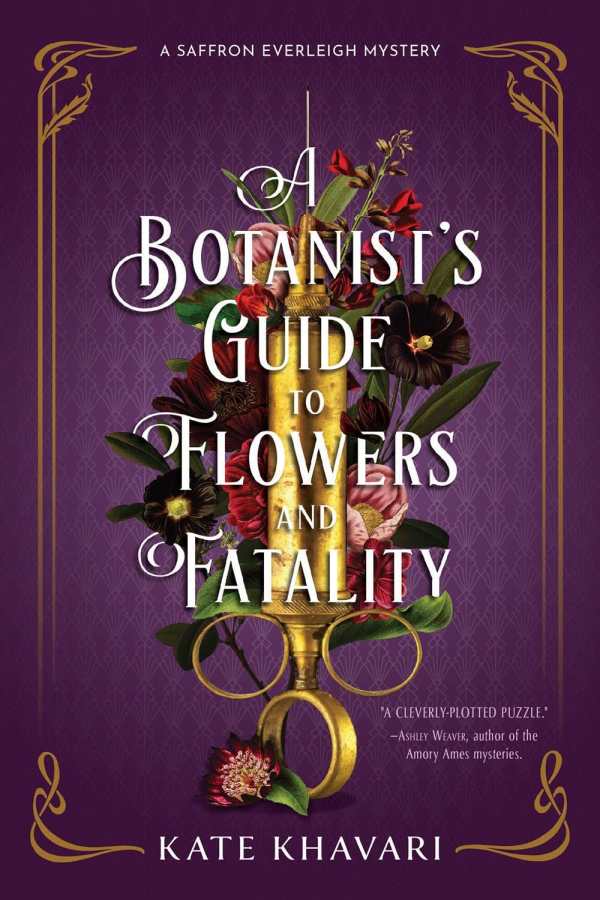A Botanist's Guide to Flowers and Fatality
A Saffron Everleigh Mystery
A botanist hurries to find a murderer who uses poisonous bouquets as their calling card in Kate Khavari’s charming series mystery novel A Botanist’s Guide to Flowers and Fatality.
At University College London in the early 1920s, men reign over the field of medical research. Still, Saffron, a botanist’s daughter and a brilliant scientist in her own right, nabs a post in a study of plant poisons afflicting residents of the countryside. Her research partner, Lee, is a cocky young medical doctor with a flirtatious air and a knack for getting under her skin.
As a side gig, Saffron agrees to assist a police investigation into the baffling murders of several upper-class women. Each victim received a bouquet prior to her death, and Saffron speculates that the key to the mystery may lie in floriography, the Victorian practice of sending coded messages through flowers. She engages Lee as her escort and follows an array of posh suspects from a jazz club to a country estate, racing to solve the puzzle before the delivery of another lethal bouquet.
The novel’s colorful Jazz Age ambiance, costumes, and cast move the story toward its satisfying conclusion. Saffron’s determination and self-assurance make her a beguiling sleuth who exemplifies the postwar modern woman, while her knowledge of nature’s poisons gives this series a distinctive draw. The perspective shifts between Saffron and Lee and their interplay adds a touch of will-they-or-won’t-they intrigue. But near the end, the point of view of a character from book one joins the rotation. Although he provides backstory about the heroine and adds a complication to her romantic life, the shift is jarring.
A Botanist’s Guide to Flowers and Fatality is a fast, clever mystery novel set in a rich 1920s atmosphere.
Reviewed by
Paula Martinac
Disclosure: This article is not an endorsement, but a review. The publisher of this book provided free copies of the book to have their book reviewed by a professional reviewer. No fee was paid by the publisher for this review. Foreword Reviews only recommends books that we love. Foreword Magazine, Inc. is disclosing this in accordance with the Federal Trade Commission’s 16 CFR, Part 255.

